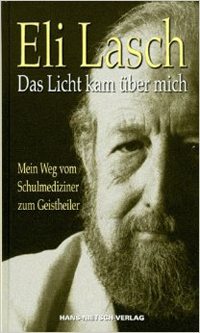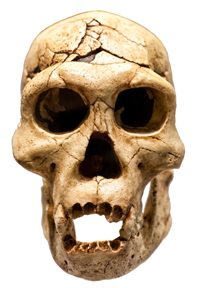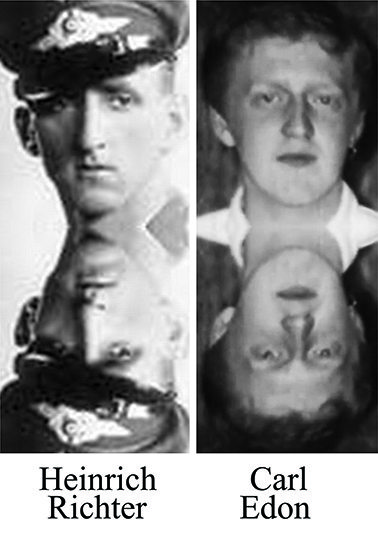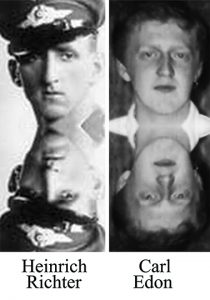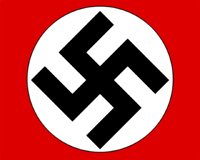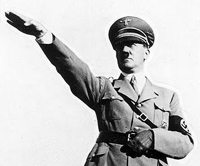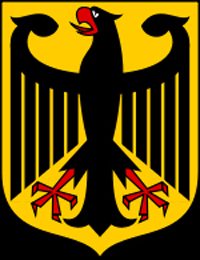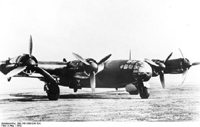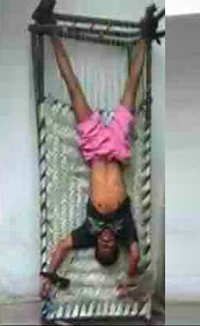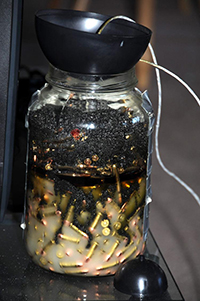How Derived: Past Life Memories in Childhood
Researcher: Ian Stevenson, MD
 From: Reincarnation and Biology, by Ian Stevenson, MD, pages 2041-2058
From: Reincarnation and Biology, by Ian Stevenson, MD, pages 2041-2058
Article by: Walter Semkiw, MD
The Lives of Joanna and Jacqueline Pollock
John and Florence Pollock owned and managed a small grocery business and a milk delivery service in England. John Pollock was born in 1920 in Bristol, England and his family attended the Church of England. In adulthood, he, along with Florence, joined the Roman Catholic Church. They had two daughters who were tragically killed in childhood.
Their first daughter, Joanna, was born on March 25, 1946, while the family was still living in the city of Bristol. The family then moved to the town of Whickham where they had a large detached house that had gardens and orchards. When Joanna was 4 years old, the family moved to the village of Hexham, where their second daughter Jacqueline was born on April 13, 1951.
As both parents worked, the girls were raised by Florence’s mother, who lived with the family. While delivering milk, Florence would wear a particular smock to protect her cloths from getting wet.
Joanna and Jacqueline were very close to one another and always did things together. Joanne, who was 5 years older than Jacqueline, tended to “mother” her younger sister, who accepted Joanne’s guidance and leadership.
Jacqueline Incurs a Scar on Her Right Forehead
When Jacqueline was 3 years old, she fell and hit her forehead on the rim of a bucket, which resulted in a laceration that required 3 stitches. A scar resulted which was located on her right forehead near the root of her nose. This scar would become more pronounced in cold weather.
Joanna loved to write and produce little plays for which she would wear costumes to enact her dramas. Both Joanna and Jacqueline enjoyed combing the hair of others, especially the hair of their father. The girls also loved to play on the swings located in a park in Hexam.
The Sisters are Killed on a Sidewalk by a Deranged Driver
 On the morning of the May 5, 1957, the girls were walking from their home to their church in Hexam in order to attend Sunday School. Suddenly, a woman deliberately drove her car onto the sidewalk that the girls were walking on. There was a wall along the sidewalk which prevented a means to escape away from the street. The car struck the sisters and killed them instantly. Joanna was 11 and Jacqueline was 6 years old when they died.
On the morning of the May 5, 1957, the girls were walking from their home to their church in Hexam in order to attend Sunday School. Suddenly, a woman deliberately drove her car onto the sidewalk that the girls were walking on. There was a wall along the sidewalk which prevented a means to escape away from the street. The car struck the sisters and killed them instantly. Joanna was 11 and Jacqueline was 6 years old when they died.
It was later learned that in a custody dispute with her husband, the driver who killed the girls had her own children forcibly taken from her. Apparently, this woman felt that if she could not possess her children, no one else should have any children. She was later confined to a psychiatric hospital.
After the deaths of her daughters, Florence quit delivering milk and her smock was stored away. Similarly, the girls’ toys and dolls were placed in a box for storage.
Sisters Reincarnate as Identical Twin Girls
Florence became pregnant again in the beginning of 1958. With the pregnancy, despite his Christian background, John was certain that Florence would have twins and that their deceased daughters would be reborn to them. Florence’s doctor insisted that she would have one child, not twins. Florence did not believe in reincarnation and dismissed her husband’s belief that Joanne and Jacqueline would reincarnate within their family.
Nonetheless, on October 4, 1958, a year and a half after their daughters were killed, Florence did indeed have identical twin girls, who were named Gilliam and Jennifer. They were born in Hexam. Both girls had a flat, dark mole on the left flank, just above the hip, which could be explained by their identical genetic makeup.
Past Life Birthmark: Jennifer has a Birthmark at the Same Site as Jacqueline’s Forehead Scar
 Jennifer also had a birthmark on her right forehead at the root of her nose, the same spot where Jacqueline incurred a scar when her head struck the bucket. Gilliam did not have a scar on her head. As such, the birthmark on Jennifer’s forehead could not be explained by genetics. Like with Jacqueline, Jennifer’s scar became more visible in cold weather. Due to this birthmark on her head, it was speculated that Jennifer may be the reincarnation of Jacqueline.
Jennifer also had a birthmark on her right forehead at the root of her nose, the same spot where Jacqueline incurred a scar when her head struck the bucket. Gilliam did not have a scar on her head. As such, the birthmark on Jennifer’s forehead could not be explained by genetics. Like with Jacqueline, Jennifer’s scar became more visible in cold weather. Due to this birthmark on her head, it was speculated that Jennifer may be the reincarnation of Jacqueline.
When the twins were 9 months old, the family moved from Hexam to a town called Whitley Bay. This is where the twins grew up.
Gilliam Recognizes Jacqueline’s Past Life Birthmark
The girls started to speak coherently when they were three years old. At about this age, Gillian spontaneously pointed to the birthmark on Jennifer’s forehead and said:
“That is the mark Jennifer got when she fell on the bucket.” In her contemporary life, Jennifer had not had any injury that would explain the scar. Jacqueline, on the other hand, had fallen on a bucket and incurred a head wound that required stitches and resulted in a scar in the same anatomical place.
Gilliam and Jennifer Identify and Claim their Past Life Dolls
When the twins were 3 or 4 years old, John and Florence took out the box of toys that had belonged to their deceased daughters. The toys were taken out and were lying around. Spontaneously, Gillian claimed a doll that had belonged to Joanna and Jennifer claimed a doll that belonged to Jacqueline. The dolls were markedly different.
Further, the twins said that Santa Clause had given the dolls to them and indeed, the dolls had been given to Joanna and Jacqueline as Christmas presents.
This furthered the speculation that Gilliam was the reincarnation of the older deceased sister, Joanna, and that Jennifer was the reincarnation of the younger sister, Jennifer.
Gilliam Recognizes her Past Life Toy Laundry Wringer
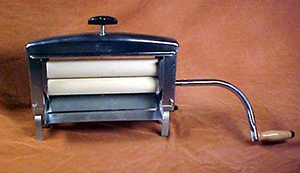 Another item that was removed from the box was a toy, miniature laundry wringer. Before the advent of electrically driven clothes dryers, wringers were used to squeeze water from washed clothes. The toy wringer had belonged to the older sister, Joanna.
Another item that was removed from the box was a toy, miniature laundry wringer. Before the advent of electrically driven clothes dryers, wringers were used to squeeze water from washed clothes. The toy wringer had belonged to the older sister, Joanna.
When Gillian saw the toy she immediately burst forward and claimed it as hers. She said: “Look! There is my toy wringer.” She added that this toy wringer was also was a Christmas present, which was true for the life of Joanna.
Past Life Memories: The Twins Remember the Swings at a Park In Hexam and their Fatal Past Life Accident
 John Pollack stated that when the twins were 4 years old, they spoke about the swings in the park at Hexam. Recall that the family moved from Hexam to Whitely Bay when they were only 9 months old, so they would have no memory of swings at Hexam by normal means.
John Pollack stated that when the twins were 4 years old, they spoke about the swings in the park at Hexam. Recall that the family moved from Hexam to Whitely Bay when they were only 9 months old, so they would have no memory of swings at Hexam by normal means.
Florence said that she had heard Gillian and Jennifer more than once talking to each other about the fatal accident of Joanna and Jacqueline. Florence noted that when they spoke about the fatal accident, it seemed it they were speaking in present time. John noted that when they spoke about the fatal accident, it seemed as they were reliving it.
John reported another incident in which Gillian and Jennifer were in an enclosed or dead-end alley near their house, that had an automobile parked in it. When the driver of the car got in and started the engine to back out of the alley, Gillian and Jennifer immediately clung tightly to each other and cringed at one side of the alley. John observed that they seem terrified. The conjecture was that the incident reminded Joanna | Gilliam and Jacqueline | Jennifer of their fatal accident, in which they had no means of escape.
Past Life Behaviors
The twins seemed to mirror the behavior of the deceased sisters. For example, Gillian and Jennifer were extremely close, like Joanna and Jacqueline, and if one of them was given a disciplinary spank, the other one would cry.
The twins tended to look toward their maternal grandmother for guidance and care, just as Joanna and Jacqueline had done, which was inappropriate at the time since Florence was no longer working and had more time to spend with her young girls than she did with her deceased ones.
The twins enjoyed combing the hair of other people, especially their father’s, much like Joanna and Jacqueline. Gillian tended to mother Jennifer and Jennifer accepted Gillian’s leadership, much as was the relationship between Joanna and Jacqueline
Florence noted that her deceased daughters, Joanna and Jaqueline, were careless about crossing streets. In contrast, Gillian and Jennifer were very cautious in these situations. They would stop and hold their mother’s hands while crossing the road. Florence thought the twins had a much stronger fear of approaching vehicles than other children of their age.
Gillian also showed an early interest in acting and like to utilize costumes, much like Joanna.
Geographic Memory: The Twins know the Location of a Past Life Park and Swings
 When the twins were 4 years old, the family took a trip from Whitely Bay to their former town of Hexam. As they were walking along the road which led to the park, even before the park was in sight, Gillian and Jennifer said that they wanted to go across the road to go to the park and play on the swings. John and Florence were surprised at this statement of the twins, as they could not have known about the park with swings as they had never been there before. The twins were 9 months old when the family moved from Hexan, so they had no opportunity to play in the park. It seemed that the twins were recalling events from the lives of the deceased girls.
When the twins were 4 years old, the family took a trip from Whitely Bay to their former town of Hexam. As they were walking along the road which led to the park, even before the park was in sight, Gillian and Jennifer said that they wanted to go across the road to go to the park and play on the swings. John and Florence were surprised at this statement of the twins, as they could not have known about the park with swings as they had never been there before. The twins were 9 months old when the family moved from Hexan, so they had no opportunity to play in the park. It seemed that the twins were recalling events from the lives of the deceased girls.
Past Life Memories: Jennifer Recognizes the Smock Florence wore Prior to the Death of the Sisters
When the twins were 4 and a half years old, their father, John Pollock, was getting ready to do some painting of their house. John took out of storage the smock that Florence had used in their milk delivery business and put it on, to protect his clothes from being soiled with paint. Jennifer, the younger twin, seeing him with the smock on, said: “Why are you wearing mom’s coat?”
When Gillian, the older twin, did not seem to recognize the smock, Jennifer became annoyed with her sister. Gillian’s unrecognition of the smock can be explained as in Gilliam’s past life as Joanna, she would have been in school when her mother came home from work and took off the smock. As such, Joanna would rarely see her mother’s smock.
In contrast, Jacqueline, as the younger daughter, was still at home and was being cared for by her maternal grandmother when Florence came home from work wearing her smock.
When John heard Jennifer saying that the smock belonged to her mother, he asked her how she knew this. Jennifer said that her mother had worn the smock when delivering milk, which was true.
Past Life Memories: The Twins Recall Having Lunch at School in Hexam
When the twins were six years old, they complained about the food that Florence had prepared for them for lunch. Florence then retorted that if they did not like the food at home, they could have lunch at their school.
The twins replied: “Well, we have done that before.” When Florence asked where they had lunch at school, the twins replied in Hexam. Florence challenged them by saying that they had never gone to school in Hexam, as the twins had grown up in Whitley Bay. Still, the twins insisted that they had lunch at the school at Hexam, which would have been accurate for the deceased sisters.
In Adulthood, Gilliam Describes her Past Life Home in Whickham
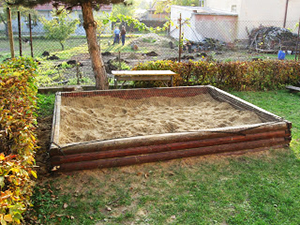 In 1981, when Gillian was 23 years old, she described to her father, John, of an inner vision she had in which she described playing in a sandpit in the garden of the large detached house. She gave a detailed description of the house and its gardens, lawns and orchards. This description accurately described a house that the family had occupied in Whickham. Recall that the family had left this house in Whickham when the deceased daughter Joanne was 4 years old.
In 1981, when Gillian was 23 years old, she described to her father, John, of an inner vision she had in which she described playing in a sandpit in the garden of the large detached house. She gave a detailed description of the house and its gardens, lawns and orchards. This description accurately described a house that the family had occupied in Whickham. Recall that the family had left this house in Whickham when the deceased daughter Joanne was 4 years old.
Gillian believed she had lived in this house when she was a young child, but her father tried to explain to her that she had never lived in the Whickham house in her current lifetime. Though logically, Gilliam should have understood this as a past life memory from her lifetime as Joanne, it was difficult for her to comprehend this.
The Pollocks leave the Roman Catholic Church due to Parishioners’ Hostility Towards Reincarnation
When the twin’s past life cases were featured in local newspapers and magazines in the 1960s, John and Florence Pollack received nasty letters from the parishioners of their church, who rejected the concept of reincarnation. As a result, John and Florence left the Roman Catholic Church.
Though Florence, at the time of the birth of her twins herself rejected the premise that John forwarded that their babies were the reincarnations of their deceased daughters, based on the statements the twins had made, she accepted that the twins were the reincarnations of Joanna and Jacqueline.
Principles of Reincarnation-Evidence of Past Lives
Relationships Renewed through Reincarnation: The sisters Joanna and Jacqueline reincarnated to their parents as identical twins Gillian and Jennifer Pollock.
Ian Stevenson, MD of the University of Virginia compiled 31 reincarnation cases involving twins. In 100 percent of these cases, the twins had significant past life relationships, dramatically showing that souls plan lifetimes to be reunited with those we love. To learn more, please go to:
Ian Stevenson, MD Reincarnation Twin Study
Past Life Birthmark: Jennifer had a birthmark on ther right forehead near the root of her nose which was located in the same anatomic spot where Jacqueline had a birthmark incurred when she fell onto a bucket. This birthmark of both Jennifer and Jacqueline became more pronounced in cold weather
Past Life Talents and Behaviors: Joanna and Gillian both enjoyed writing and producing plays, utilizing costumes for their childhood dramas. Joanna’s maternal behavior towards her younger sister Jacqueline was replicated in the relationship between Gillian and Jennifer.
Geographic Memory: Though the family moved from Hexam to Whitely Bay when the twins were only 9 months old, when the family returned to Hexam for a visit, the twins had knowledge of the location of the park and swings where they had played in their previous lives.


 How Derived: Past Life Memories in Child
How Derived: Past Life Memories in Child









 How Derived:
How Derived: 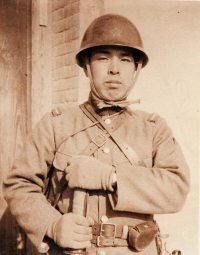 Reincarnation & Planning Lifetimes: Daw has an Announcing Dream involving the Japanese Soldier as a Spirit Being
Reincarnation & Planning Lifetimes: Daw has an Announcing Dream involving the Japanese Soldier as a Spirit Being A Child’s Past Life Memories: Ma says She misses Japan and her Family
A Child’s Past Life Memories: Ma says She misses Japan and her Family The US War Plane that Killed Ma in a Past Lifetime was a P-38 Lightning
The US War Plane that Killed Ma in a Past Lifetime was a P-38 Lightning Other reincarnation cases which demonstrate gender identity issues due to change of sex include:
Other reincarnation cases which demonstrate gender identity issues due to change of sex include: